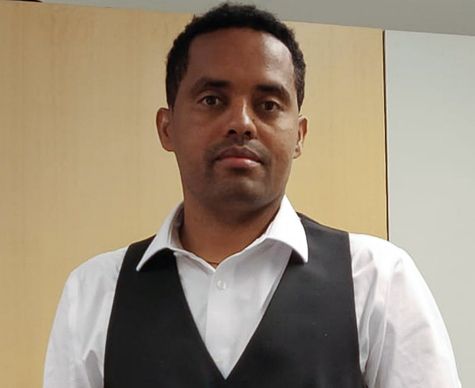Early Career Scientist Spotlight
Dr. Tibebu Getachew Ayalew (he/him/his)
Space Physicist
Solar Physics Laboratory (671)
What inspired you to pursue a career in your field of science?
My academic career in space physics started at Washera Geospace and Radar Science Research Laboratory (WaGRL), Bahir Dar University, Bahir Dar, Ethiopia. Dr. Baylie Damtie, who was teaching space physics courses at WaGRL, was my role model to pursue a career in space physics. I was fascinated and inspired by his academic journey, and I followed in his footsteps to become a space scientist. In addition, while I was studying for my master’s degree at Bahir Dar University, I got a chance to attend the American Geophysical Union (AGU) Chapman conference which was held in Addis Ababa, Ethiopia in 2012. The conference was focused on the longitudinal and hemispheric dependence of space weather. It was my first time to attend this kind of international conference. I remember that I was so amazed by the presentations given by scientists, although most of the contents of the presentations were completely new to me. During the conference, I got a chance to meet and chat with some of the scientists. Attending that conference gave me the opportunity to see the works of other scientists and what an international space science community looks like. I was also influenced by that conference and became more interested in studying space weather (short-term changes in the Sun) and space climate (long-term changes in the Sun). After I completed my master’s thesis, I moved to Finland in 2014 to work with Professor Kalevi Mursula and his team at the University of Oulu. I worked at the University of Oulu for six years (five years as a PhD student researcher and one year as a postdoctoral researcher). My work at the University of Oulu has shaped my career and given me a good opportunity to study the Sun in detail.
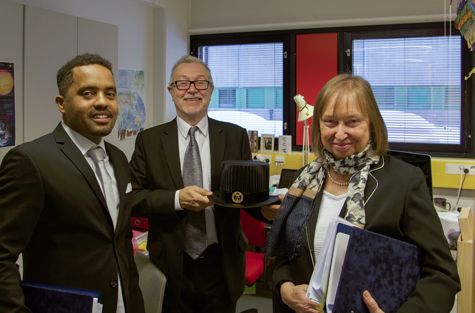
Credit: Tibebu Getachew Ayalew
What science questions do you investigate?
My current research is mainly focused on the multi-spacecraft analysis of both remote and in situ observations of the quiet-Sun magnetic structure and its solar energetic particle (SEP) environment. Because of their low intensities and large observation distances (the most extensive and detailed observations of SEPs have been made from spacecraft near the Earth or at 1 astronomical unit), the energetic particle environment of the quiet Sun, which is crucial for our understanding of the solar corona and solar wind, is not well understood. As NASA’s Parker Solar Probe spacecraft approaches closer and closer to the Sun, we are able to obtain in situ measurements of the solar output of plasma, energetic particles, and electromagnetic fields of the near-Sun environment that have not been previously explored. I am investigating SEPs using data from Parker Solar Probe and other missions to understand the mechanisms that produce, accelerate, and transport these particles.
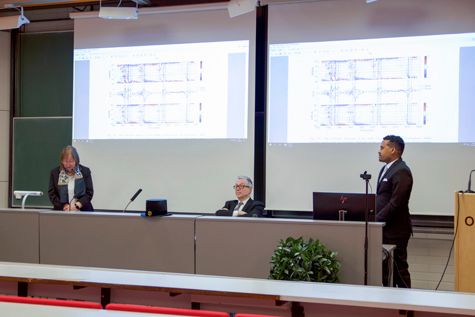
Credit: Tibebu Getachew Ayalew
Tell us about one project that has been particularly impactful in your field.
One of the projects that I have been involved with deals with the solar photospheric magnetic fields, in particular the smallest-scale fields, their polarity asymmetry, and spatial-temporal evolution. Although the magnetic field structure on the solar surface (solar photospheric magnetic field) has been studied for several decades, the weakest solar photospheric fields were expected to be dominated by random fluctuations without showing any consistent patterns. Consequently, the study of the weakest field elements has been relatively ignored and rather little is known of their long-term evolution. In a series of papers, we have studied the detailed spatial distribution of the asymmetry of the weakest solar photospheric field values (also known as “weak-field polarity asymmetry” or “weak-field shift”) and its evolution during solar cycles 21-24 (between 1974 and 2019). Our work has convincingly shown strong evidence for weak-field asymmetries reflecting a real feature of weak field values, which is a completely new observation. We have studied the physical significance of weak-field asymmetries over a longer timescale using six different datasets, and the results are consistent.
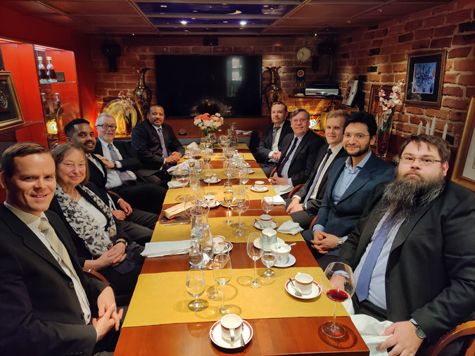
Credit: Tibebu Getachew Ayalew
What is one space mission that you are particularly excited about, and why?
I am very excited about the NASA's Parker Solar Probe (PSP) mission, a mission to touch the Sun. The PSP keeps traveling closer and closer to the Sun and, so far, it is the only human-made object that has traveled in such close proximity to Sun. It has been reported that PSP flew through the Sun’s upper atmosphere, the corona, for the first time on April 28, 2021. The PSP has done an incredible job measuring solar outputs closer to the Sun that have not been measured before. Personally, I have been working on observations from the PSP mission. While at Princeton University, I got a chance to work with the PSP mission science team and gained a lot of experience.
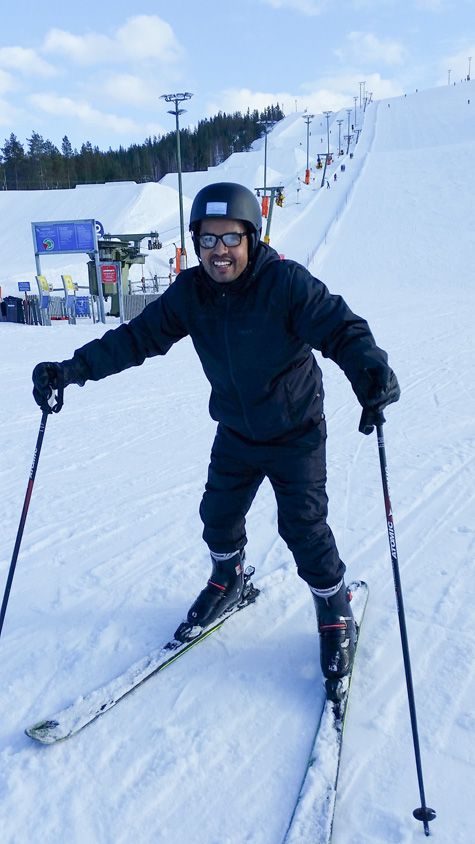
Credit: Tibebu Getachew Ayalew
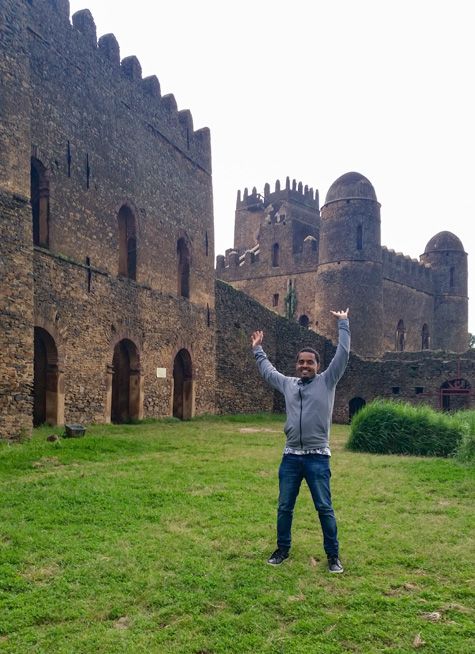
Credit: Tibebu Getachew Ayalew
What advice would you give your younger self?
My advice to my younger self would be dream big, work hard, and never give up; then you can be anything you want to be, irrespective of your race, gender, or age. In your academic journey, a supervisor plays a key role in your academic success. A healthy student-supervisor relationship is so important. Work with a supervisor who can understand you, and distance yourself from any supervisor who tends to manipulate you. If you want to be a more successful person, in addition to your personal efforts, team up and collaborate with good and successful people and learn from their experience.
What do you like to do in your free time?
In my free time I like to do social activities. I like to visit new places and chat with friends.
What are your future research interests and goals?
My future research interest and goal is to continue my work, i.e., studying solar activity and its effects, and achieve breakthrough science. In addition, I am interested in engaging in teaching and outreach activities.
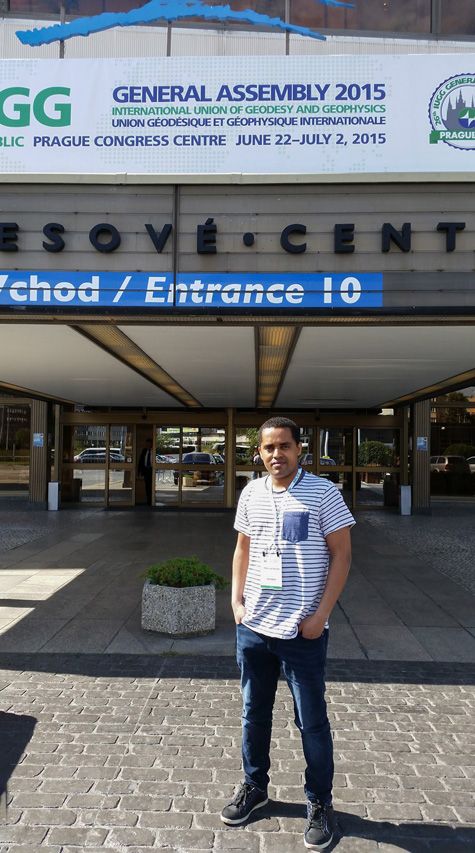
Credit: Tibebu Getachew Ayalew
Biography
Home Town:
Gojjam, Ethiopia
Undergraduate Degree:
Bachelor of Education in Physics (minor in Mathematics), Jimma University, Jimma, Ethiopia
Post-graduate Degrees:
M.Sc in Space Physics, Bahir Dar University, Bahir Dar, Ethiopia
Ph.D in Space Physics, University of Oulu, Oulu, Finland
